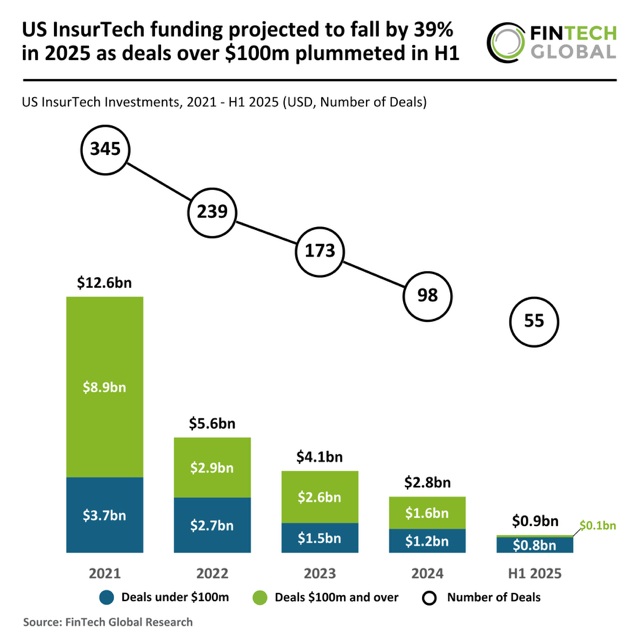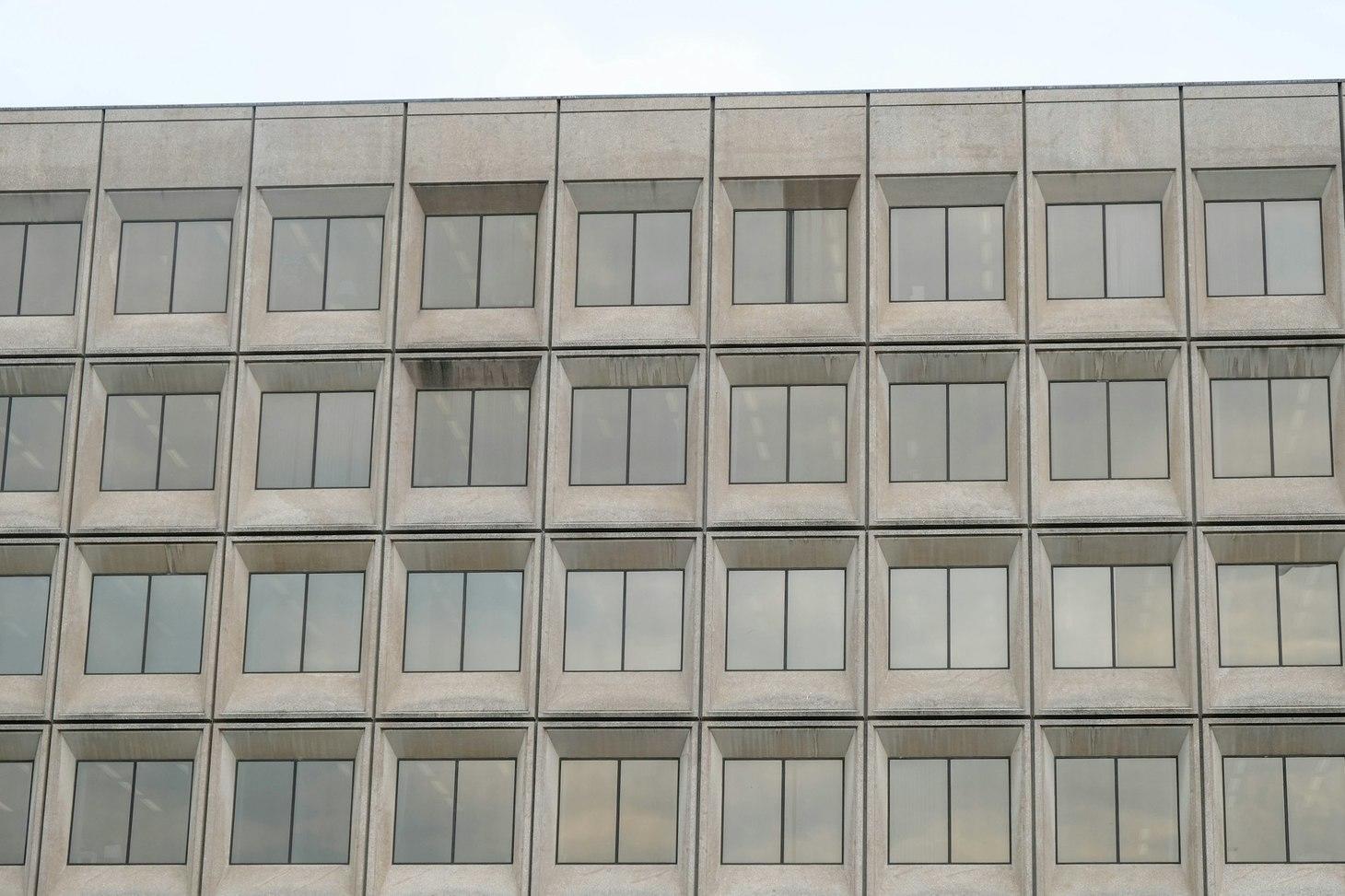News

California insurance commissioner is examining State Farm’s wildfire claims handling
Existing lawsuits allege State Farm systematically underinsured policyholders in the affected wildfire areas.
The devastating January 2025 Eaton and Palisades wildfires left behind widespread destruction, and for many, a second disaster in the form of an arduous, inconsistent, and in some cases, an exasperating insurance claim process.
As the state’s largest home insurer, State Farm endured most of the responsibility for claims in the region. Yet from the early days following the fires, complaints by wildfire victims began mounting against State Farm: delays in payment, unresponsive adjusters, lowball estimates, and a lack of continuity in the claims process.
Despite being the largest homeowner insurer in California, the scope of the Los Angeles area wildfires left the company flat-footed. State Farm was forced to enlist out-of-state adjusters, many of whom were reportedly unfamiliar with California’s specific insurance regulations and consumer protection laws. Making matters worse, wildfire victims often had their adjusters reassigned mid-claim, often without proper handoff, leaving State Farm’s policyholders to re-explain their cases or start over entirely.
The discontinuity has caused many State Farm policyholders, despite submitting documented losses resulting from the wildfires, only to receive a fraction of what’s needed to restore their home and their lives. State Farm appears to have exacerbated the general systemic issues of the claims process by its overall handling of policyholder claims and State Farm’s conduct in response to the wildfires has prompted a regulatory response.
AI in Insurance
AI will be ‘picking winners and losers’ among insurance products, say experts
Carriers are eager to deploy artificial intelligence to improve their customer experience and streamline mundane operatins, and insurers are embracing the technology to achieve faster and more accurate underwriting. But the robots are also coming for another aspect of the insurance business that could have profound and unintended consequences: recommending individual products for consumers.
At the S&P Global Ratings Annual Insurance Conference in New York last month, Penn Mutual CEO David O'Malley predicted that AI tools will soon enable insurance and financial services professionals to automatically identify the most suitable products for their clients. In this shift, he suggested, AI will effectively become the decision-maker — "picking winners and losers" among competing carrier products by analyzing complex product terms and individual client needs.
Automating this process would not only raise questions about how carriers might find ways to "game the algorithm" to put their own products ahead of their competitors', but it would undoubtedly draw scrutiny from regulators charged with assuring that such recommendations are genuinely in consumers' best interest.
Kathy Donovan, a specialized consulting manager at professional services firm Wolters Kluwer
InsurTech/M&A/Finance💰/Collaboration

US InsurTech funding projected to fall by 39% in 2025 as deals over $100m plummeted in H1US InsurTech funding projected to fall by 39% in 2025 as deals over $100m plummeted in H1
Key US InsurTech investment stats in H1 2025:
- US InsurTech funding decreased by 61% in H1 2025
- Trend analysis showed a projected drop of 39% drop in funding for the year as deals over $100m plummeted in H1
- Coalition, an InsurTech specialising in cyber risk and active insurance, secured a $30m equity investment from Mitsui Sumitomo Insurance, making it one of the largest US InsurTech deals in the first half of the year
US InsurTech funding decreased by 61% in H1 2025
In H1 2025, the US InsurTech sector saw a modest increase in deal volume but a substantial decline in funding compared to H2 2024.
A total of 55 deals were recorded, up 22% from the 45 deals completed in H2 2024 and 4% higher than the 53 deals in H1 2024.
However, total funding fell sharply to $873m — down 61% from the $2.2bn raised in H2 2024, though still 66% higher than the $527m recorded in H1 2024.
This divergence reflects a recalibration in the market, with investor focus shifting away from large-scale deals seen in late 2024 towards a broader distribution of smaller rounds.
Trend analysis showed a projected drop of 39% drop in funding for the year as deals over $100m plummeted in H1
If the H1 2025 trend were to continue across the remainder of the year, 2025 would close with 110 deals and $1.7bn in total funding.
This would represent a 14% increase in deal volume from the 98 deals completed in 2024, but a 39% decline in total funding from the $2.8bn raised last year.
These figures point to a more cautious funding environment, where activity remains strong but investors appear increasingly selective, favouring more measured capital deployment across a wider pool of startups.
The average deal size in H1 2025 was $15.9m, down significantly from $49.5m in H2 2024, but still up from $9.9m in H1 2024.
This suggests a cooling of the outsized rounds that defined the latter half of 2024, as investors gravitate back toward smaller, more strategic bets — possibly favouring earlier-stage or capital-efficient companies with strong unit economics.
Deals under $100m accounted for $773m in H1 2025, a 47% increase from the $527m raised in H1 2024 and a 19% drop from the $648m recorded in H2 2024.
High-value deals of $100m or more contributed just $100m in H1 2025 — a steep 94% decrease from the $1.6bn raised through such deals in H2 2024.
This marks the weakest half for large-scale deals in the period reviewed, reinforcing the ongoing retreat from blockbuster rounds as investor attention returns to smaller transactions and more deliberate capital allocation.
*FinTech Global

‘New Normal’ Sets in as Pace of Insurance Agency M&A Becomes Clear
‘New Normal’ Sets in as Pace of Insurance Agency M&A Becomes Clear
Business people shaking hands, finishing up meeting, business etiquette, congratulation, merger and acquisition concept.
Insurance agency mergers and acquisitions during the second quarter 2025 were up 11% over the prior quarter, but M&A activity for the first half of the year is down 8% compared to last year, according to investment banking and financial consulting firm OPTIS Partners.
OPTIS Partners’ M&A database counted 319 deals in the U.S. and Canada as of June 30—on pace for 758 deals in the latest trailing 12 months. Since the last quarter of 2023, the pace has been 750-800, which is a “new normal,” said Steve Germundson, a partner at OPTIS Partners.
By Chad Hemenway
Financial Results

P&C insurers see steady 4.3% CAGR through 2032
The global property and casualty (P&C) insurance market is projected to grow from $1.92t in 2025 to $2.57t by 2032, with a CAGR of 4.3%, according to Fortune Business Insights.
Growth is driven by climate risks, regulatory changes, digital innovation, and rising consumer awareness.
Vehicle insurance was the largest segment in 2024, supported by rising ownership and mobility services.
Meanwhile, commercial property insurance is expected to grow fastest, backed by infrastructure investment in developing markets like India.
Despite high premiums and market saturation in developed regions, demand is rising across Asia-Pacific due to urbanisation and increased risk awareness.
Insurers are adapting through new technologies, partnerships, and regulatory shifts such as India’s proposed composite insurance licenses.
US P&C Insurance: 2025 Outlook Reflects Past Challenges
According to the April 2025 report “US Property & Casualty Outlook: The Past Weighs on the Present” by the Swiss Re Institute, the US property and casualty (P&C) insurance industry is expected to maintain stable profitability in 2025, although growth will decelerate and underwriting uncertainty remains elevated.
The report, authored by James Finucane and Thomas Holzheu, outlines how previous liability reserve developments, natural catastrophe losses, and recent tariff policies are shaping the industry’s near-term trajectory.
Profitability Forecast and Investment Income
The Swiss Re Institute forecasts a return on equity (ROE) of 10% for both 2025 and 2026, supported by increased investment returns. This marks a slight decrease from the estimated 11% ROE in 2024. The report attributes this to reduced underwriting tailwinds and narrowing yield gaps between portfolio and market rates. Net investment income reached $79 billion in 2024, a 20% increase over the prior year. Portfolio yields are projected to rise to 4.0% in 2025 and 4.2% in 2026.
Underwriting and Combined Ratio The industry’s combined ratio is expected to rise to 98.5% in 2025 and 99% in 2026, up from 97.2% in 2024. MORE

Surplus lines premiums jump 13% in H1
First-half surplus lines premiums reported by 15 U.S. surplus lines service and stamping offices totaled $46.2 billion, up 13.2% from the same period last year, according to a report issued Monday.
The stamping offices reported $81.64 billion in premiums for 2024, a 12.1% increase from 2023, according to Kansas City, Missouri-based Wholesale & Specialty Insurance Association, which issued the report. That compares with a 14.6% increase to $72.7 billion in premiums in 2023.
The largest premiums were reported by liability (nonprofessional) lines, which include aviation, general and products liability, at $30.15 billion last year, an 11.3% increase. It accounted for 36.9% of all lines.
This was followed by property, at $26.8 billion, an 11% increase, which accounted for 32.9% of the total. Property includes aircraft physical damage, commercial property and related business interruption, commercial package and various standalone commercial coverages such as difference in conditions, earthquake, flood, terrorism and vacant buildings coverage.
Auto liability lines saw a 61.1% increase to $3.4 billion in premiums in 2024 — marking the largest increase among all lines. It accounted for just 4.2% of the excess and surplus lines market, however. Auto liability includes auto dealer liability, commercial auto liability, excess auto liability and garage owners liability and storage.
.

Greenlight Re reports improved Q2'25 underwriting result despite investment setback
Greenlight Re reported net income of $0.3 million for Q2 2025, a sharp decline from $8.0 million in Q2 2024, primarily due to a $7.8 million investment loss this quarter versus $15.3 million in investment income a year earlier.
David Einhorn, Chairman of the Board of Directors, commented on this, “The Solasglas investment portfolio lost 4.0% during a difficult quarter.
“We continue to have a defensive stance, with a nearly flat net exposure, and our long investments failed to keep up with a strongly rising market.
“Despite this, our strong underwriting result and share buyback allowed us to increase our fully diluted book value per share.”
Greenlight Re’s gross premiums written increased 6.3% to $179.6 million in Q2 2025, while net premiums earned increased 2.0% to $161.6 million.
Announcements

Neptune Flood Surpasses 250,000 Policies in Force
Neptune Flood, a leading provider of private flood insurance, announced today that it has exceeded 250,000 policies in force. This milestone reinforces Neptune's leading provider position in the United States private flood insurance market and highlights the continued adoption of its modern approach to flood protection.
Neptune's growth has been driven by its ability to offer fast, reliable coverage to homeowners and businesses across the country. Since launching in 2018, the company has expanded to all 50 states and Washington, D.C. and is backed by more than 30 global insurers and reinsurers.
"Crossing the 250,000-policy mark is a significant moment for Neptune and for the broader private flood insurance market," said Trevor Burgess, CEO of Neptune Flood. "It reflects the strength of our team, the trust of our distribution partners, and the increasing demand for alternatives to the National Flood Insurance Program. As flood risk grows, so does the need for simple, accessible, and flexible coverage, and Neptune is delivering that at scale."
This announcement follows Neptune's recent expansion to over $400 million in premium capacity and continues the company's track record of rapid, responsible growth.
Mike Parrish Appointed as CEO, Howden U.S. and Jim Hays as Vice Chairman, Howden Group Holdings
Howden, the global insurance intermediary group, today announces the appointment of Mike Parrish as Chief Executive Officer, Howden U.S., and of Jim Hays as Vice Chairman, Howden Group Holdings.
Mike will build a next-generation U.S. retail broking business for clients and talent, bringing Howden’s unique employee-ownership driven and client-centric model to the largest and most dynamic insurance market in the world. Jim will bring more than 40 years’ U.S. insurance industry experience to the Howden Group Board.
Jim is a deeply experienced U.S. insurance executive and entrepreneur who previously served as Chief Executive Officer of Hays Company, an insurance broker which he founded in 1994 and sold to Brown & Brown in 2018. He served as Vice Chair and as a member of the Board of Brown & Brown, Inc. He started Hays as a seven-person operation and oversaw more than 25 years of growth to build one of the leading independent U.S. brokers.
Howden started with three people in 1994 and has become a top 10 global broker with more than 22,000 people, including nearly 6,000 employee shareholders who own 34% of the Group. It has done this by attracting entrepreneurs to build businesses across 56 countries, today managing $47 billion in premiums and providing a full-service offering across retail, specialty, and reinsurance broking, risk capital advisory, employee benefits, and underwriting and program management.
Claims
Appraisers Can Decide Causation| Property Insurance Coverage Law Blog
In a decision with far-reaching implications for the appraisal process in property insurance disputes, the Seventh Circuit Court of Appeals affirmed last week that appraisers may determine the cause of loss when establishing the amount of loss.
The case, Mesco Manufacturing, LLC v. Motorists Mutual Insurance Company, involved a commercial hail damage claim in Indiana, where the insurer sought to deny a portion of a binding appraisal award by arguing that certain roofing components were not hail-damaged and therefore outside the scope of coverage. The appellate court rejected this approach and upheld the district court’s ruling in favor of the policyholder.
The dispute was a familiar and longstanding tension about whether appraisers and umpires are permitted to assess causation when determining the amount of loss, or whether causation lies solely within the domain of legal coverage decisions made by courts. Motorists Mutual took the position that causation is a coverage issue and that only courts may decide whether hail, a covered peril, actually caused the damage in question. Based on this position, the insurer attempted to withdraw certain roofs from the appraisal after the panel had been formed and before the umpire issued his decision.
Today

Federal Climate Report Challenges Insurance Industry's Extreme Weather Risk Models
A controversial Department of Energy report questioning the scientific basis for predicting worsening extreme weather events has put the federal government at odds with insurance industry assumptions.
The U.S. Department of Energy released a controversial climate report Tuesday that challenges fundamental assumptions underlying insurance risk assessments and climate modeling, arguing that widely-used predictions of extreme weather events are based on flawed science and overstated scenarios.
The 151-page report, titled *A Critical Review of Impacts of Greenhouse Gas Emissions on the U.S. Climate says that "most extreme weather events in the U.S. do not show long-term trends" and that "claims of increased frequency or intensity of hurricanes, tornadoes, floods, and droughts are not supported by U.S. historical data."
The timing of the DOE climate report creates an interesting juxtaposition with current insurance industry data. While the federal report questions the reliability of extreme weather projections, Swiss Re's latest analysis released earlier this year shows global insured losses from natural catastrophes reached $137 billion in 2024, with the reinsurance giant projecting losses will continue following a "5-7% annual growth rate (in real terms) that has been the norm of recent years."READ ON
Recommended Events

ITC Vegas 2025 | October 14-16 | A Wonderland of Possibilities
Insurance innovation for our changing world
ITC Vegas (InsureTech Connect)uniquely combines unbeatable networking with what’s new and next, ensuring your time will be spent meeting more people, discovering new solutions, generating deal flow, and creating valuable partnerships. It’s a conference experience for the entire insurance ecosystem and unlike anything you’ve attended before!
Join the transformative insurance event that doesn’t just bring the industry together – it moves the entire industry forward.
'Connected’ Newsletter & Podcast and InsurTech Consulting are proud partners of ITC Vegas 2025 again this year Use this promo code 200ITC826 to receive $200 off the registration fee. Discount valid for new registrations only
